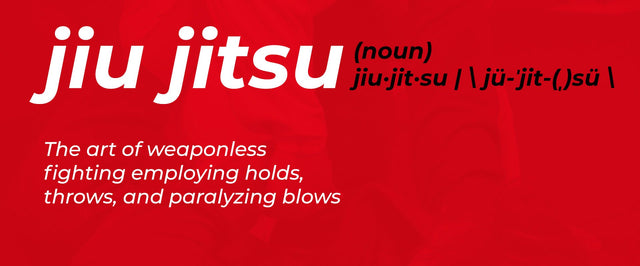Here's What All The Common Portuguese and Japanese Words in BJJ Mean
One of the things that makes Brazilian Jiu-Jitsu so unique is that it's a fusion of two cultures: Japanese and Brazilian. The Gracie family (among others) learned a hybrid form of Judo from Mitsuyo Maeda. Over the years, they kept many of the names of traditional techniques and concepts, but introduced new ones.
The result is a hodgepodge of names in multiple languages, often with very different meanings than their literal translations. To make it more confusing, Brazilians themselves have adopted Portuguese as their national language.
So if you feel overwhelmed by the constant jargon being used in your local gym, don't worry. Here's a crash course on what everything means in BJJ.

"Kimono" and "Gi"
What It Means
These terms are used interchangeably. Americans tend to use the word "gi", which is slang for "keikogi" and specifically refers to practice or training clothes. Brazilians often use the word "kimono" which literally means "a thing to wear" and refers to any clothing.
How To Use It
Practically, there's no real difference between the two terms and they can be used either way. American's tend to think of "kimono" as a women's garmet because of film. So there's that.

"Oss"
What It Means
A word so overused, it's become a meme online. "Oss" is a Japanese word that has no single meaning. It's English equivalent might be "Alright." It's Japanese slang for "Onegai Shimasu" which is another broad term meaning "let's train."
How To Use It
"Oss" can be though of as a greeting or acknowledgment. Use it to say hello to training partners. If your instructor says "Oss?" in the form of a question, reply with an enthusiastic "oss!" of your own.

"Mata Leao"
What It Means
Pretty simple, "mata leao" means "lion killer" and is how Brazilian's refer to the rear naked choke.
How To Use It
Generally, you should probably just call the rear naked choke by it's English name, unless your instructor refers to it that way or you're showing off (no judgement from us)

"Uke" (oou-kay)
What It Means
Uke is Japanese for "one who receives" and refers to someone having a technique performed on them in a demonstration. Such person is "taking ukemi"
How To Use It
If someone asked you to be an "uke", they want to demonstrate a move on you.

"Porrada" (poe-hada)
What It Means
Popularized in more recent years by Team Renzo Gracie's unoffical slogan "everyday porrada", porrada means "brawling" in Portuguese. In BJJ, it simply means to train very hard.
How To Use It
Porrada is mainly a joke among Brazilians, and a point of pride in hard training. If someone observes that you have "porrada", it's either a compliment or a warning that you're rolling too hard, so pay attention to their inflection. Or just ask them what they mean.

"Sensei" or "Sempai"
What It Means
"Sensei" is a safe, generic term for a teacher. In fact, Japanese school children and university students refer to their class instructors as "Sensei". "Sempai" refers to a senior person of any kind, even a fellow student with more experience.
How To Use It
If you're training in a Brazilian culture, your instructor probably won't prefer to be called Sensei. If they do, use Sensei like you would "Mr" and include their name. You can use Sempai, but only if other students use it.

"Porra" (poe-ha)
What It Means
This is a very specific Brazilian-Portuguese expletive. Like, ahem, certain American expletives, it can mean many things and usually is a person or thing.
How To Use It
We wouldn't. And if someone other than a close friend calls you one, it's an insult.
"Judo"
What It Means
If you hear people referring to "judo moves", they are referring to the martial art of Judo. Essentially a sister art to Brazilian Jiu-jitsu, BJJ practitioners still employ standing Judo throws in their training. The word itself broadly means "the soft way" with "soft" being interchangeable with "yielding"
How To Use It
In BJJ, many standing throws are specifically considered "judo moves" even though a large part of the ground fighting in BJJ is also derived from Judo. Don't overthink it.

"Ashi Garami"
What It Means
"Ashi garami" simply means "leg entanglement", which has lead to a lot of confusion about what specific position it refers to in jiu-jitsu. Unfortunately, the Japanese aren't much help as their traditional leglock positions aren't at all like the Brazilian Jiu-Jitsu ones.
How To Use It
Technically, any leglock position where both legs are controlled is an "ashi garami". Some BJJ practitioners have more specific positions in mind such as "inside ashi", "outside ashi", or "double ashi"
For example, John Danaher refers to "double ashi" as what other practitioners might call the "Honey Hole" or the "Four Eleven". The main thing to know is that different people have different ideas about what "ashi garami" is.






54 Comments
Amazing!
Great site fellas. Love the look of your Gis. I’ll have to try them out. Do you guys sponsor at all?
Always a good thing to learn new words and language’s. I am a combat sport fan and practitioner it helps.
Very happy with everything I got